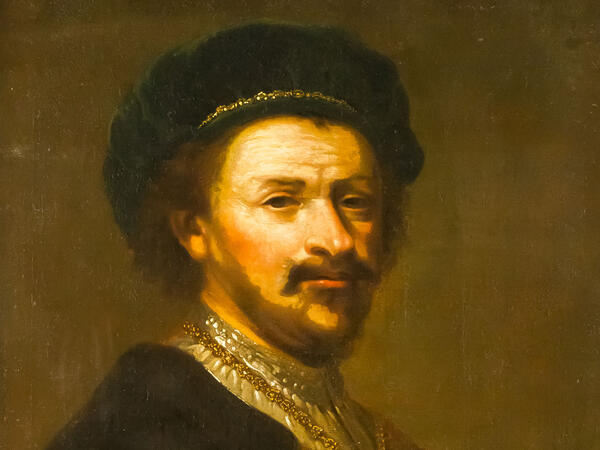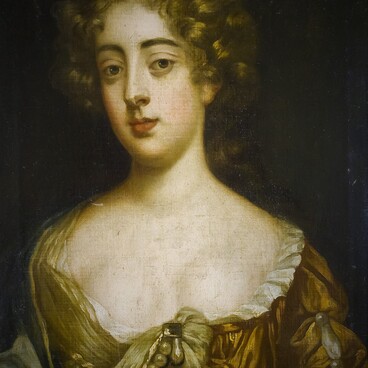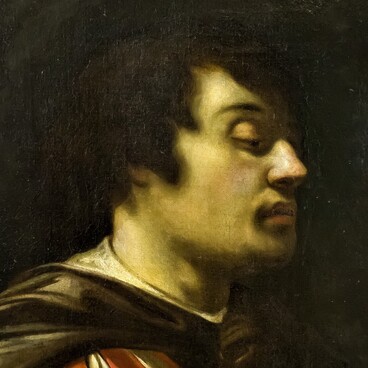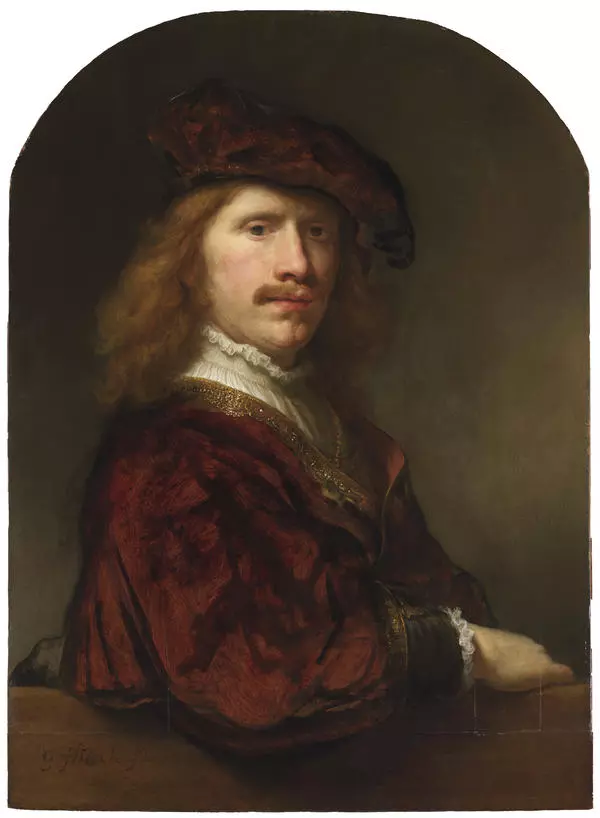Govert Flinck was a 17th century sought-after Dutch portraitist. He studied under Rembrandt and got an excellent education which provided him with commissions from the elite.
In ‘Portrait of an Unknown Man’, Flinck depicted his contemporary — a representative of the high society. The precious jewelry is not the only thing that betrays the man’s noble birth. Members of the aristocracy also possessed a special demeanor — the man’s proud posture radiates composed dignity and self-confidence. Despite emphasizing the model’s high social status, Flinck did not attempt to flatter him. He rendered meticulously all the peculiarities of the man’s countenance, down to wrinkles and facial expressions. The most detailed part is the tired glance — the man seems to have gone through too many storms and no longer take anything on faith.
Govert Flinck was a painter of the Dutch Golden Age. In 1656, after marrying Sophie van der Houven, daughter of a director of the Dutch East India Company, he was welcomed to the upper-class society. He was also considered to be one of the best pupils of Rembrandt — the master who gave the world such paintings as ‘The Night Watch’, ‘The Anatomy Lesson of Dr. Nicolaes Tulp’, and ‘Syndics of the Drapers’ Guild’. Flinck managed to grasp his teacher’s manner of painting so well that his paintings would often possess the same degree of skill. Both Rembrandt and Flinck mainly preferred to use contrasts of light and shadow. The latter also borrowed the inclination for a warm golden color scheme and a broad manner of painting from his mentor.
His early works are often deemed the best. At that time, he worked on not only portraits, but also mythological and religious scenes. After leaving Rembrandt’s workshop, he chose to focus mainly on portrait paintings. Later, his portraits would demonstrate a certain ornateness and special solemnity typical of the artistic style of the Baroque — the artists of this movement filled the canvases with active movement, they loved complex angles, dramatic light effects and sublime subjects.
“Portrait of an Unknown Man” was donated to the museum from the collection of Andrey Likhachov.
In ‘Portrait of an Unknown Man’, Flinck depicted his contemporary — a representative of the high society. The precious jewelry is not the only thing that betrays the man’s noble birth. Members of the aristocracy also possessed a special demeanor — the man’s proud posture radiates composed dignity and self-confidence. Despite emphasizing the model’s high social status, Flinck did not attempt to flatter him. He rendered meticulously all the peculiarities of the man’s countenance, down to wrinkles and facial expressions. The most detailed part is the tired glance — the man seems to have gone through too many storms and no longer take anything on faith.
Govert Flinck was a painter of the Dutch Golden Age. In 1656, after marrying Sophie van der Houven, daughter of a director of the Dutch East India Company, he was welcomed to the upper-class society. He was also considered to be one of the best pupils of Rembrandt — the master who gave the world such paintings as ‘The Night Watch’, ‘The Anatomy Lesson of Dr. Nicolaes Tulp’, and ‘Syndics of the Drapers’ Guild’. Flinck managed to grasp his teacher’s manner of painting so well that his paintings would often possess the same degree of skill. Both Rembrandt and Flinck mainly preferred to use contrasts of light and shadow. The latter also borrowed the inclination for a warm golden color scheme and a broad manner of painting from his mentor.
His early works are often deemed the best. At that time, he worked on not only portraits, but also mythological and religious scenes. After leaving Rembrandt’s workshop, he chose to focus mainly on portrait paintings. Later, his portraits would demonstrate a certain ornateness and special solemnity typical of the artistic style of the Baroque — the artists of this movement filled the canvases with active movement, they loved complex angles, dramatic light effects and sublime subjects.
“Portrait of an Unknown Man” was donated to the museum from the collection of Andrey Likhachov.




